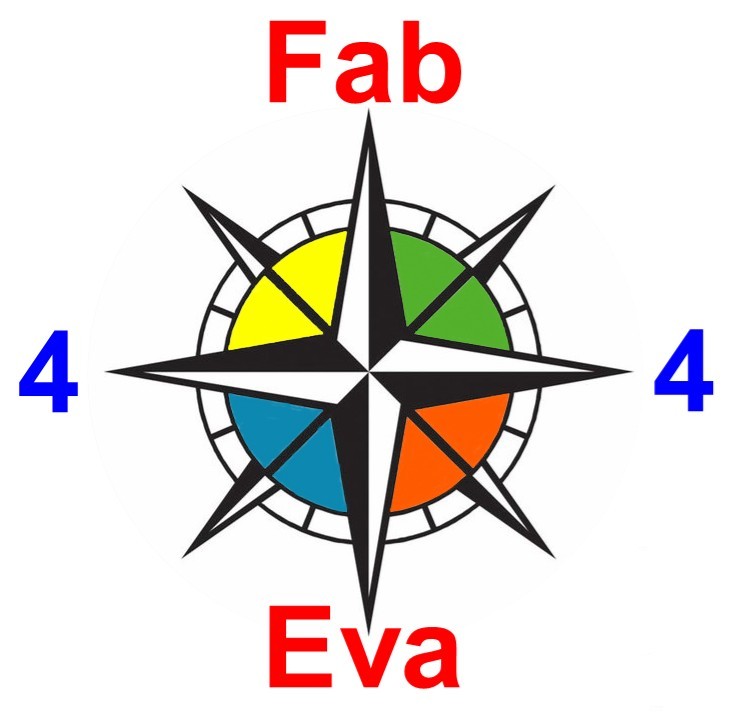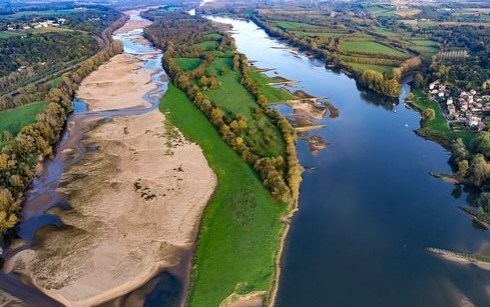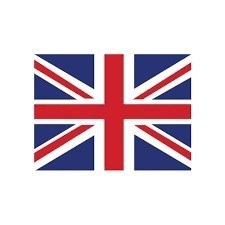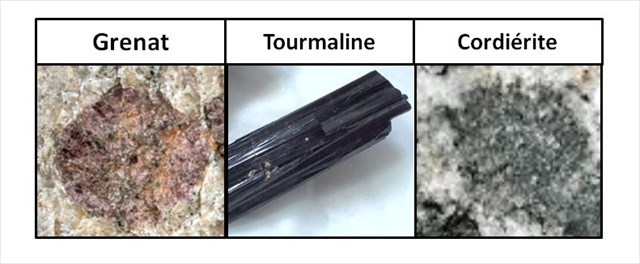
Our first earth cache.

Point de vue remarquable, perché sur un éperon rocheux à 70 mètres au-dessus de la Loire, le jardin du Champalud offre un panorama spectaculaire sur la Loire et l’île Neuve. Le site a été classé en 1935, en raison de son point de vue exceptionnel sur la vallée de la Loire. Sur le site, vous trouverez une aire de pique-nique, des jeux pour les enfants, des toilettes, une piscine de plein air, une aire d’accueil de camping-cars et l'Office de Tourisme .
 A remarkable vantage point, perched on a rocky outcrop 70 meters above the Loire, the Champalud garden offers a spectacular panorama over the Loire and Île Neuve. The site was classified in 1935, because of its exceptional view over the Loire Valley. On the site, you will find a picnic area, games for children, toilets, an outdoor swimming pool, a camper van reception area and the Tourist Office.
A remarkable vantage point, perched on a rocky outcrop 70 meters above the Loire, the Champalud garden offers a spectacular panorama over the Loire and Île Neuve. The site was classified in 1935, because of its exceptional view over the Loire Valley. On the site, you will find a picnic area, games for children, toilets, an outdoor swimming pool, a camper van reception area and the Tourist Office.
Le marbre
En géologie le marbre est une roche métamorphique dérivée du calcaire et constituée principalement de cristaux de calcite. En architecture, sculpture et marbrerie ce terme peut désigner n'importe quelle pierre difficile à tailler et capable de prendre un beau poli, dont les plus courantes sont les « vrais » marbres (au sens géologique).
Les marbres de la géologie présentent une grande diversité de coloris, bien que la couleur de base de la calcite soit le blanc. On y trouve fréquemment des veines appelées marbrures. Les veines et les coloris sont généralement dus à des inclusions d'oxydes métalliques. Certains types de marbre portent des noms particuliers, par exemple le cipolin ou la griotte. Certains marbres, comme le vert antique, composés de calcaire et de serpentine, sont des ophicalces.
 In geology, marble is a metamorphic rock derived from limestone and composed mainly of calcite crystals. In architecture, sculpture and marble work, this term may refer to any stone that is difficult to cut and capable of taking a beautiful polish, the most common being the "real" marbles (in the geological sense).
In geology, marble is a metamorphic rock derived from limestone and composed mainly of calcite crystals. In architecture, sculpture and marble work, this term may refer to any stone that is difficult to cut and capable of taking a beautiful polish, the most common being the "real" marbles (in the geological sense).
The marbles of geology show a great diversity of colors, although the basic color of calcite is white. There are frequently veins called marbling. Veins and colors are usually due to inclusions of metal oxides. Some types of marble have special names, such as cipolin or sour cherry. Some marbles, like the ancient green, composed of limestone and serpentine, are ophicalces.
Le granite
Le granite est une roche plutonique magmatique à texture grenue. Il est composé de minéraux, en grande majorité de quartz, de micas et de feldspaths. Cette roche est le résultat du refroidissement lent, en profondeur, de grandes masses de magma intrusif qui formeront le plus souvent des plutons, ces derniers affleurant actuellement en surface, grâce au jeu de l'érosion qui a décapé les roches sus-jacentes. Ces magmas acides (c'est-à-dire relativement riches en silice) sont essentiellement le résultat de la fusion partielle de la croûte terrestre continentale.
 Granite is a common type of felsic intrusive igneous rock that is granular and phaneritic in texture. These rocks mainly consist of feldspar, quartz, and mica. This rock is the result of slow cooling, much under the Earth's crust, of big quantity of intrusive magma which will mostly create plutons, and these ones are now present as outcrops, due to the erosion which removed the rocks over. These acid magmas (this means they consist of much silica) are essentially the result of the partial fusion of the Earth's crust.
Granite is a common type of felsic intrusive igneous rock that is granular and phaneritic in texture. These rocks mainly consist of feldspar, quartz, and mica. This rock is the result of slow cooling, much under the Earth's crust, of big quantity of intrusive magma which will mostly create plutons, and these ones are now present as outcrops, due to the erosion which removed the rocks over. These acid magmas (this means they consist of much silica) are essentially the result of the partial fusion of the Earth's crust.
* La composition chimique, une roche QFM(+)
Un granite présente communément une composition chimique majoritaire de 3 minéraux qui peuvent se résumer en QFM :
- Q comme Quartz : translucide parfois transparent, ce minéral est gris sans facette.
- F comme Feldspath : ce minéral opaque avec facettes miroitantes a deux formes :
- une forme potassique (K+), orthose blanche ou rose selon la présence d’oxydes de fer.
- une forme sodique (Na+), albite blanc laiteux et d'aspect brillant.
- M comme Mica : ce minéral se présente en fines paillettes brillantes selon deux formes :
- la biotite, mica noir brillant de composition ferro-magnésienne.
- la muscovite, mica blanc brillant au soleil avec un aspect nacré.
 * Chemical composition, a QFM rock (+)
* Chemical composition, a QFM rock (+)
A granite commonly has a majority chemical composition of 3 minerals which can be summarized in QFM:
- Q for Quartz: translucent sometimes transparent, this mineral is gray without facets.
- F for Feldspar: this opaque mineral with shimmering facets has two forms:
- a potassium form (K +), white or pink orthosis depending on the presence of iron oxides.
- a sodium form (Na +), milky white albite and shiny appearance.
- M like Mica: this mineral comes in fine shiny glitter in two forms:
- biotite, shiny black mica of ferro-magnesian composition.
- muscovite, white mica shining in the sun with a pearly appearance.

A ces minéraux principaux peuvent s'ajouter des minéraux accessoires :
- Cordiérite : minéral polycristallin vert, parfois bleuté.
- Tourmaline : minéral noir formant des bâtonnets allongés de section triangulaire.
- Grenats : minéral rouge à système cristallin cubique.
 To these main minerals can be added accessory minerals:
To these main minerals can be added accessory minerals:
- Cordierite: green polycrystalline mineral, sometimes bluish.
- Tourmaline: black mineral forming elongated sticks of triangular section.
- Garnets: red mineral with cubic crystal system.

* Texture et taille des cristaux
La texture d'une roche caractérise l'arrangement des cristaux et leur taille relative et absolue.
Dans une granite la taille des cristaux est directement liée à la vitesse de refroidissement. Plus le refroidissement est lent, plus les cristaux formés sont gros.
Le granite présente une texture générale grenue se déclinant en plusieurs formes :
- Texture grenue équante : les cristaux sont de même taille (de l'ordre du mm ou du cm).
- Texture grenue porphyroïde : de gros cristaux de taille centimétrique automorphes souvent préexistant dans le magma sont dispersés parmi des cristaux bien plus petits (de 5 à 10 fois).
- Texture aplitique : quartz et feldspaths seuls, en cristaux équigranulaires, formant un assemblage de taille millimétrique (roche hololeucocrate).
- Texture pegmatitique : minéraux de taille centimétrique à pluri-centimétrique, quartz et feldspath automorphes, avec ou sans micas.
 * Texture and size of the crystals
* Texture and size of the crystals
The texture of a rock characterizes the arrangement of the crystals and their relative and absolute size.
In a granite the size of the crystals is directly related to the rate of cooling. The slower the cooling, the larger the crystals formed.
Granite has a general grainy texture available in several forms:
- Equant grainy texture: the crystals are the same size (of the order of mm or cm).
- Granular porphyroid texture: large automorphic centimeter-sized crystals often preexisting in the magma are dispersed among much smaller crystals (5 to 10 times).
- Aplitic texture: quartz and feldspars alone, in equigranular crystals, forming an assembly of millimeter size (hololeucocratic rock).
- Pegmatitic texture: minerals from centimeter to pluri-centimeter in size, quartz and automorphic feldspar, with or without micas.

* Coloration et composition d'un granite
La teinte d'une roche magmatique (et la taille de ces grains) permet de la caractériser selon le Diagramme de Streckeisen :
- une roche hololeucocrate est blanche, elle possède moins de 12,5% de ferromagnésiens.
- une roche leucocrate possède entre 12,5 et 37,5% de ferromagnésiens.
- une roche mésocrate possède entre 37,5 et 62,5% de ferromagnésiens.
- une roche est mélanocrate possède plus de 62,5% de ferromagnésiens.
 * Coloring and composition of a granite
* Coloring and composition of a granite
The tint of a magmatic rock (and the size of these grains) makes it possible to characterize it according to the Streckeisen Diagram:
- a hololeucocratic rock is white, it has less than 12.5% ferromagnesians.
- a leucocratic rock has between 12.5 and 37.5% ferromagnesians.
- a Mesocratic rock has between 37.5 and 62.5% ferromagnesians.
- a melanocratic rock has more than 62.5% ferromagnesians.

► Sources bibliographiques / Bibliographical sources
La table d'orientation
Vous êtes devant une table d'orientation réalisée dans un bloc rocheux
Les questions concernent cette roche
 You are in front of an imposing oriantation table made in a rock. The questions are about this rock.
You are in front of an imposing oriantation table made in a rock. The questions are about this rock.
Validation
- Question 1 : Prenez une photo de vous ou d'un élément vous identifiant permettant de reconnaître la zone.
Cette photo devra être ajoutée à votre log.
- Take a picture of yourself or something that identifies you in the area.
This photo should be added to your log.
- Question 2 : Décrivez la texture de la roche et la taille des grains, déduisez en sa texture. Peut-on parler de granite ?
- Describe the rock of the photo plates: structure, size of the elements. Can we talk about real granite? Using the description, determine the texture of this training.
- Question 3 : D'après le diagramme de Streckeisen dans quelle teinte classeriez vous la roche ?
- According to the Streckeisen diagram in which shade would you classify the rock?
Vous pouvez vous loguer sans attendre notre confirmation, mais vous devez nous envoyer les réponses en même temps soit par mail via notre profil : fabeva44, soit via la messagerie geocaching.com (Message Center).
You can log in without waiting for our confirmation, but you must send us the answers at the same time either by email via our profile: fabeva44, or via geocaching.com (Message Center).